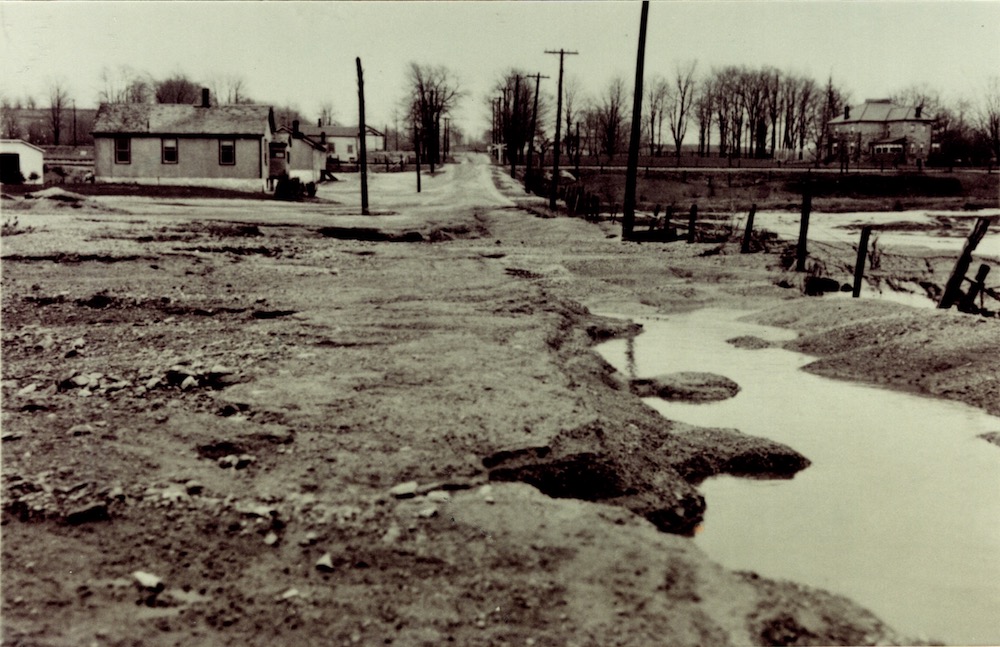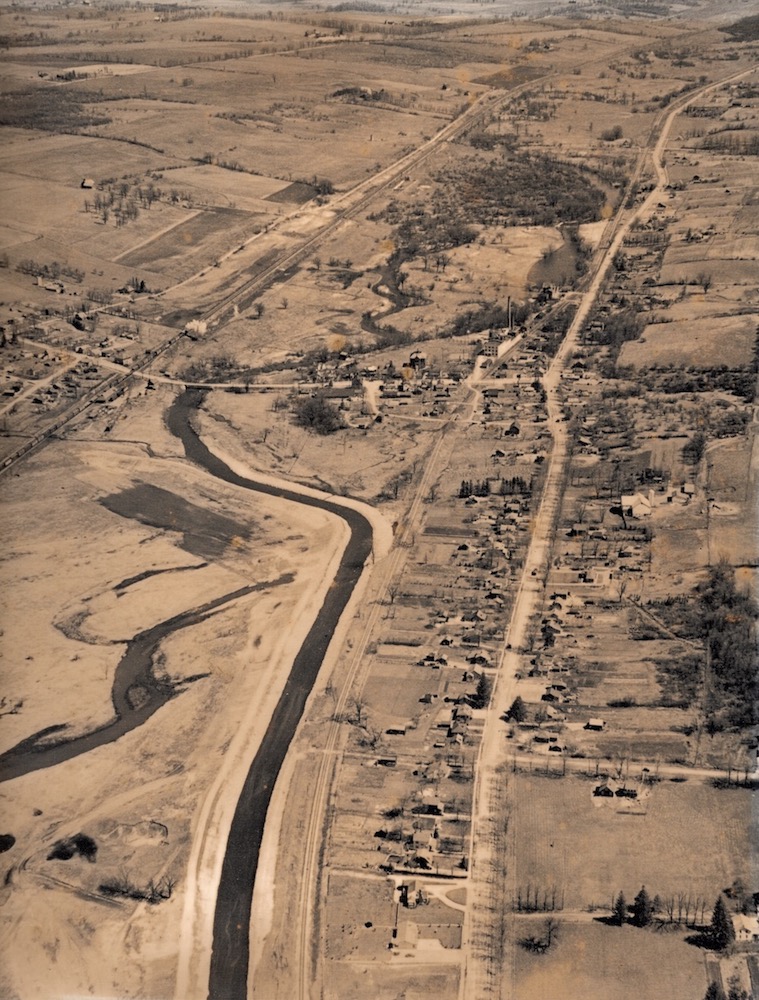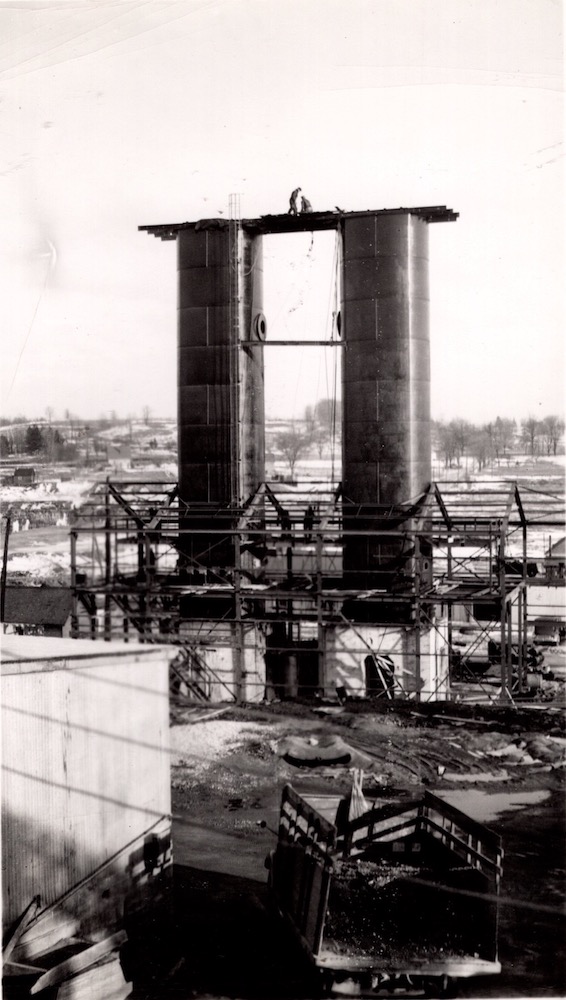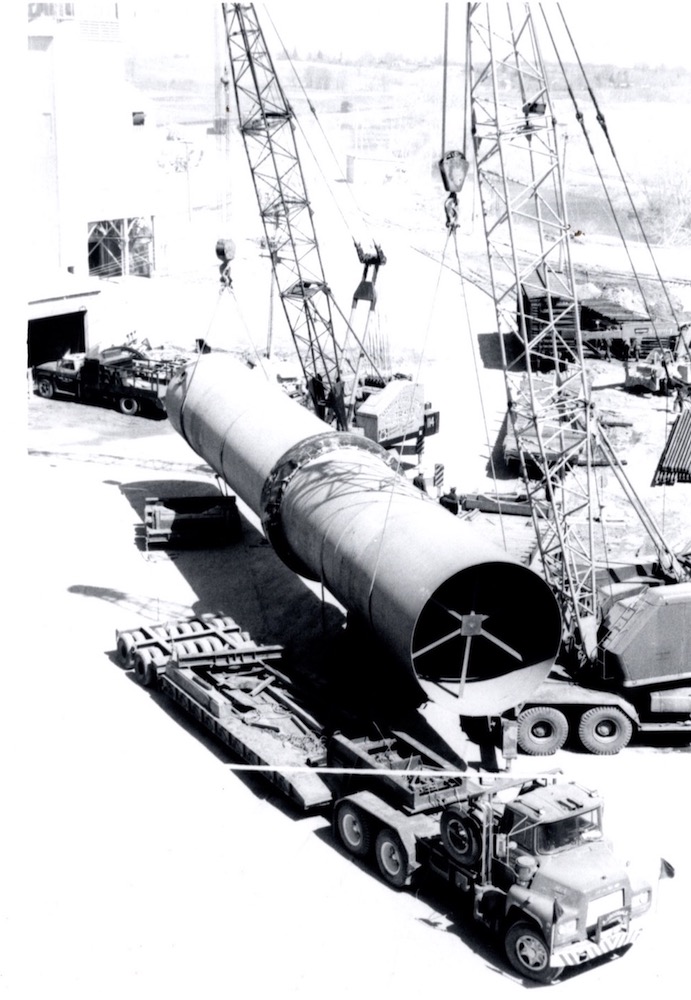Building Upon Soggy Grounds
Through the late 1930s and early 1940s, the quarries dealt with the damage left by the great flood in 1937. Company homes built to attract new employees to work sites during the First World War were destroyed. They were condemned and torn down or sold.
The owners of the quarries took on the task of diverting the river to flow in a straight line south of their operations. In consultation with the Upper Thames municipalities, and at over $5 million, a new dyke was built to the north, and a new riverbed was dredged. The image below shows how the river was straightened to parallel the road.
With this work in progress, Gypsum Lime and Alabastine Limited focused on building new gas kilns. By February 1939, the construction crews added the top segments of the 62-foot high vertical shaft kilns. By March, the buildings at the base of the kilns were framed.
Plans for further expansion of this site were announced in the Wall Street Journal in October 1940. By spending $ 100,000, the plant hoped to double its capacity. As the fifties came to a close, Gypsum Lime and Alabastine had 6 vertical kilns (each identified by its number) fed by 2 1000-ton storage silos.
The plants at North American Cyanamid were completely modernized through the 1950s. Total production at the site almost doubled by 1957. The site expanded when a new grinding plant and additional storage silos were built. A rotary kiln was constructed that used pulverized coal to heat the limestone.





